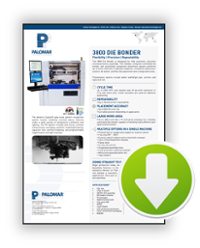The intricate packaging process for optoelectronic devices can challenge the efforts to reduce manufacturing costs. Since the goal of an optical component is to manipulate light, the design rules for the optoelectronics packaging are significantly more complex than semiconductors. For semiconductors, advances in wafer processing technology have resulted in a packaging process that is both automated and planar. However, for optical components, the front-end process is significantly different; and for photonic devices, the controlled assembly processes and critical assembly tolerances create a challenge during both package design and manufacturing.
Optoelectronic packaging requires four main packaging system capabilities:
- Process – highly controlled in every facet
- Purity – no contamination to occlude optical surfaces
- Heat Transfer – eutectic solder processes for high power edge emitting lasers
- Precision – component alignment is critical for optimal optical performance
The importance of process control during optoelectronic assembly is evident in the attachment of a laser diode within a source or  pump laser. The laser diode is a temperature-sensitive device requiring tightly regulated process control during assembly. The output of a laser diode depends on the drive current passing through it, as long as the bias voltage is above the band-gap energy. Also, the operating temperature of the laser is a key factor in device reliability as threshold current tends to increase with temperature, increasing the amount of waste heat generated. Furthermore, laser lifetime decreases as temperature increases. Thus, due to the stringent device requirements, strict process control is important for manufacturing cost reduction.
pump laser. The laser diode is a temperature-sensitive device requiring tightly regulated process control during assembly. The output of a laser diode depends on the drive current passing through it, as long as the bias voltage is above the band-gap energy. Also, the operating temperature of the laser is a key factor in device reliability as threshold current tends to increase with temperature, increasing the amount of waste heat generated. Furthermore, laser lifetime decreases as temperature increases. Thus, due to the stringent device requirements, strict process control is important for manufacturing cost reduction.
| Eutectic reflow process is a traditional process in which edge emitting laser diodes are attached via a low-ohmic, high-thermal conductivity metallization in a precisely controlled pace. The reflow profile during an automated in-situ eutectic die attach process is engineered to provide consistent melting and a void-free attach interface while also holding the laser in position during reflow. This results in consistent heat transfer from the laser diode and contributes significantly to temperature stabilization during laser operation. |
Programmable pulse heating coupled with automated component attach provides the recipe-driven process control essential to producing high-yield, high-performance laser diode assemblies. During the in-situ reflow process, temperature slopes for heating and cooling, and dwell times are programmable to enable process optimization and repeatability. Tightly-coupled temperature control ensures profiles are tracked repeatably in production.
Watch the Video on Laser Diode Packaging:
Download these resources for more information:
| 3800 Data Sheet | Pulsed Heat System |
 |
 |
----
Claudia Salerno
Marketing Communications Manager
Palomar Technologies, Inc.